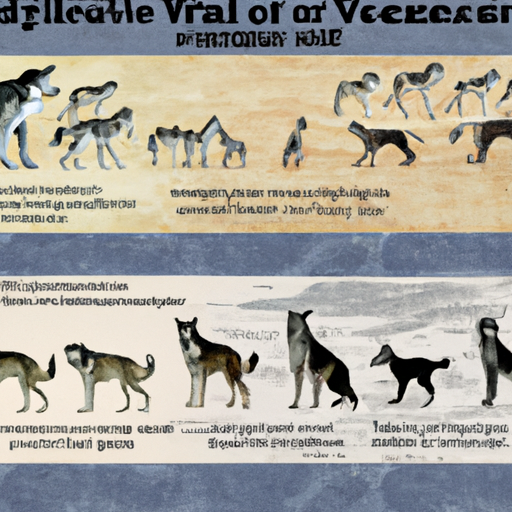Introduction
You may have heard it said that every dog, from the smallest Chihuahua to the largest Great Dane, has a common ancestor in the wolf. But have you ever stopped to wonder how it’s possible that your loyal Labrador or your spunky Spaniel descended from these wild, fierce creatures?
The Ancient Bond Between Man and Wolf
Imagine a scene from 20,000 years ago. You’re a hunter-gatherer, and as you return to your campfire, a wolf cautiously approaches. Instead of reaching for your weapon, you toss it a bone. The wolf, instead of running away, stays. Over time, this unlikely relationship deepens.
- Mutual Benefits: The wolves benefitted from the scraps of food, while humans benefitted from the wolves’ skills in hunting and protection against predators.
- Selective Breeding: Over generations, humans started to favor wolves that were more docile and friendly. These wolves were more likely to reproduce, passing these traits onto future generations.
The Evolution of Dogs From Wolves
The domestication process, over thousands of years, led to the evolution of dogs from wolves.
- Physical Changes: Domesticated wolves started to show physical changes – smaller teeth, shorter snouts, and floppy ears.
- Behavioral Changes: They also developed traits that were more appealing to humans, like loyalty and a desire to please.
| Wolves | Dogs |
|---|---|
| Long snout | Shorter snout |
| Large teeth | Smaller teeth |
| Upright ears | Often floppy ears |
The Variety of Dog Breeds
Fast forward to today, and we have over 300 different dog breeds worldwide. How did this happen? Simply put, humans started breeding dogs for specific purposes.
- Working Dogs: Some dogs were bred for their strength and endurance, making them perfect for working on farms or hunting.
- Companion Dogs: Others were bred for their temperament, creating the perfect companions for humans.
How Science Supports This Theory
Recent scientific studies have supported this theory of dog domestication. Genetic analysis shows that dogs are indeed descendants of ancient wolves. In fact, all dog breeds share a common gene pool with the extinct wolf populations of Europe.
FAQs
Q: When did wolves become dogs?
A: Scientists believe this process started around 20,000 to 40,000 years ago.
Q: Are dogs and wolves the same species?
A: No, dogs and wolves are different species, but they share a common ancestor.
Q: Can a dog and a wolf mate?
A: Yes, they can mate and have fertile offspring, but this is rare in the wild.
Q: Why do dogs look so different from wolves?
A: This is due to thousands of years of selective breeding by humans.
Q: How many different dog breeds are there?
A: There are over 300 recognized dog breeds worldwide.
So, the next time you look into the eyes of your beloved pet, remember its ancient heritage – a tale of survival, adaptation, and the extraordinary bond between human and beast.



